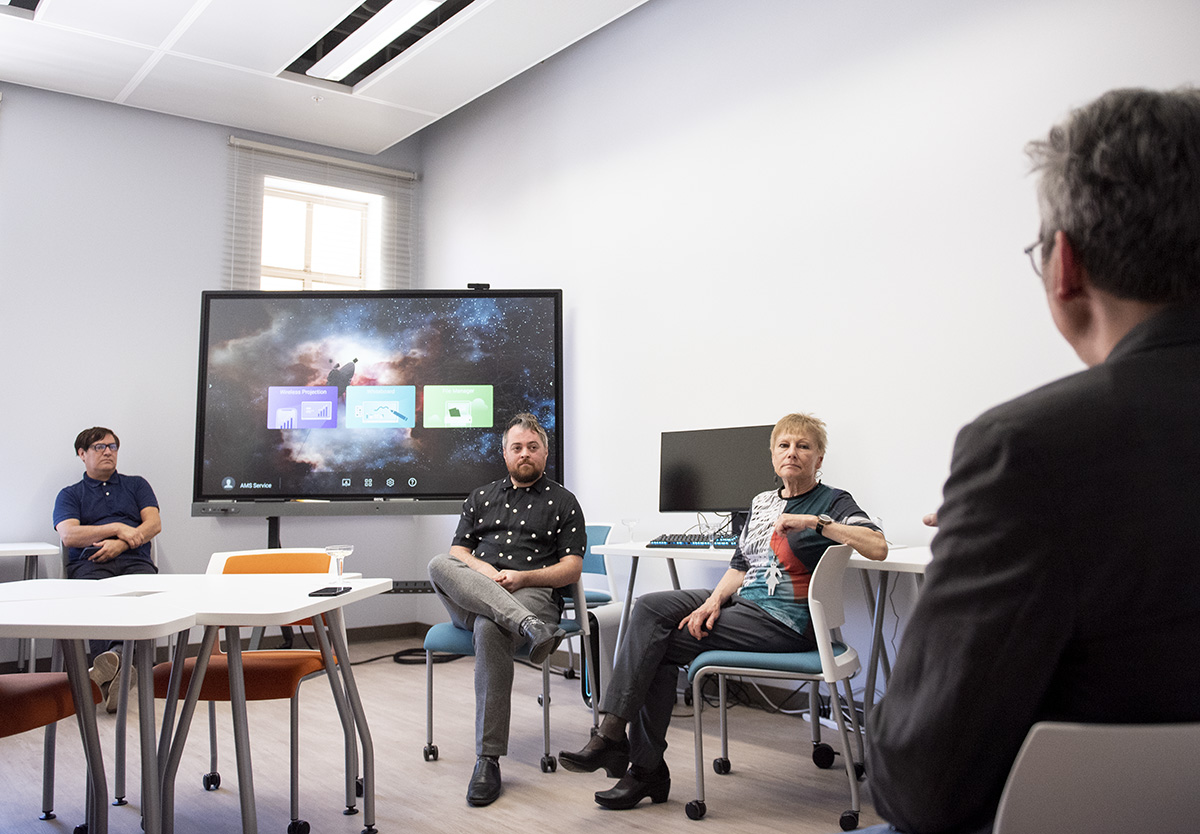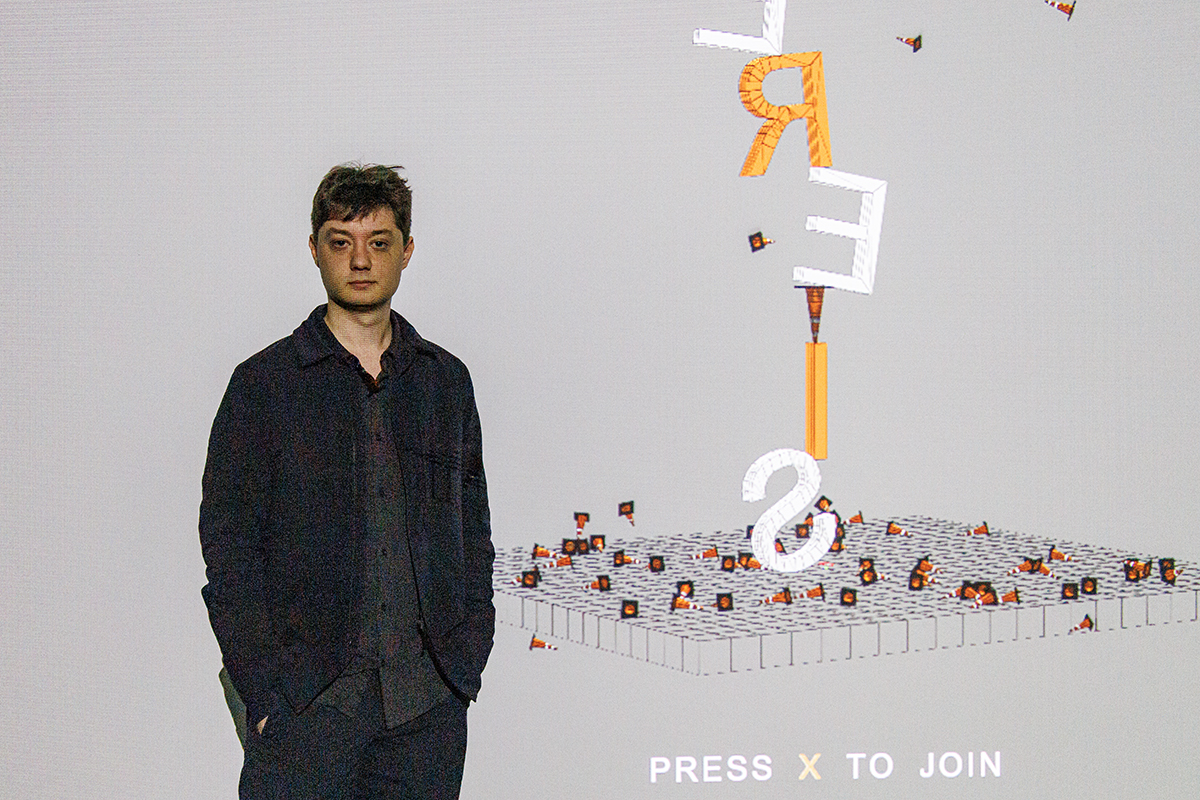Hua Chai explores modern identity, queerness with boundless digital media art
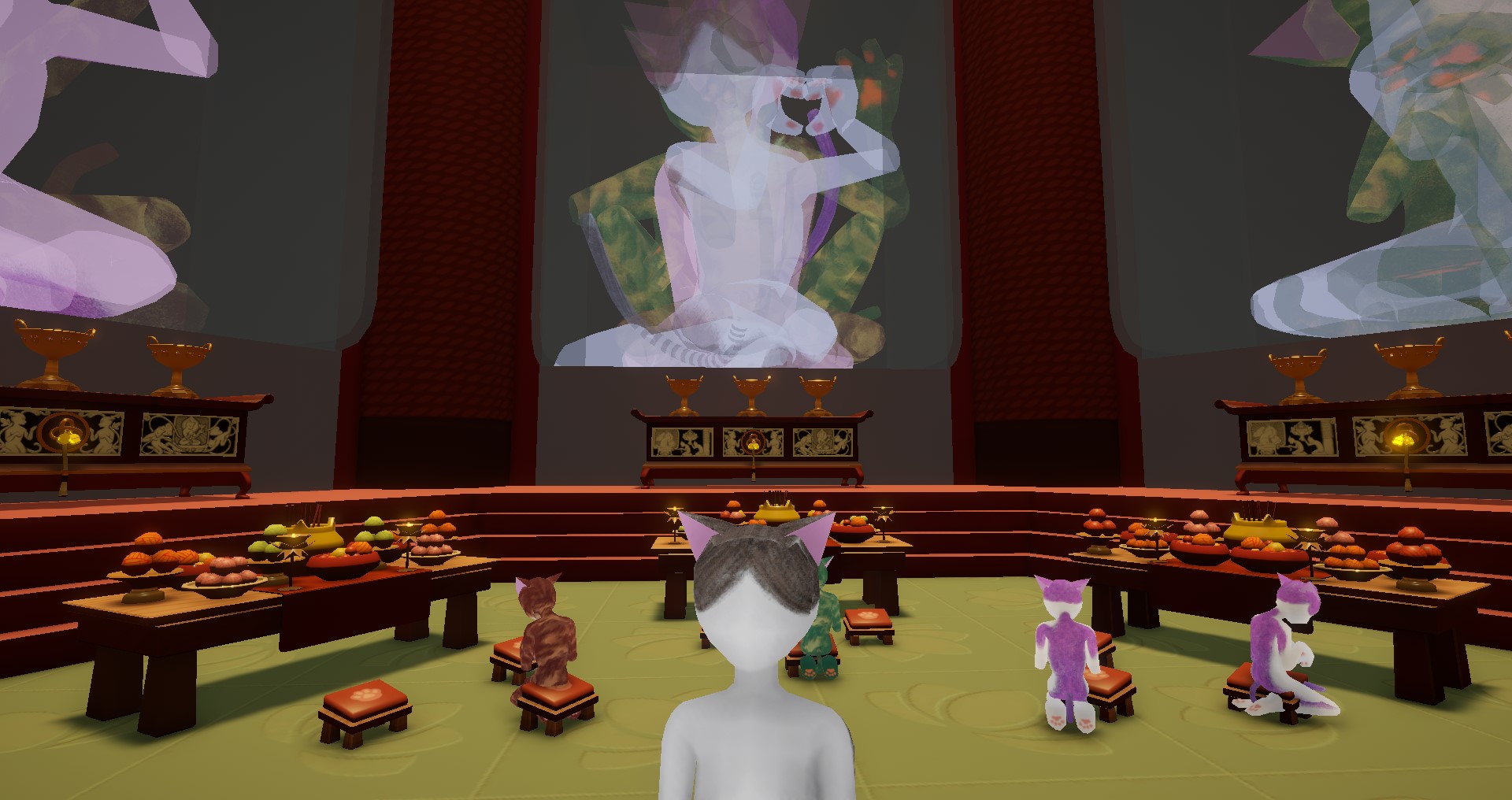
Humanoid gray, brown and magenta cats kneel in a digital tableau. Graduate student in design media arts Hua Chai’s exploration of the concept of catboys has touched on themes of virtuality, the queer erotics of play and the aesthetics of popular capital. (Courtesy of Hua Chai)
By Davis Hoffman
Jan. 13, 2024 8:59 p.m.
This post was updated Jan. 30 at 9:11 p.m.
Hua Chai refuses to adhere to a static definition.
The graduate student in design media arts pushes the boundaries of games in their artwork through the UCLA Game Lab. Working across several different media forms such as video and animation, interactive experiences, and other experimental digital media, Chai said they harness the internet as inspiration to explore modern identity and queerness. One particular throughline of his work is interiority, Chai said.
“(It’s) this idea that what constructs identity is hard to access necessarily, because (it’s) so contained within this exterior facade,” Chai said. “What is perceivable is usually the exterior. It’s hard to give attention or acknowledgement to what can’t be perceived.”
[Related: Influenced by his education journey, Aidan Strong redefines what video games can be]
Born and raised in Malaysia, Chai considers the internet a formative part of their upbringing in terms of queer representation and awareness. Chai said much of the way he realized his own identity was through the internet, particularly because of the fact that he grew up in an environment with no formal acknowledgement of queerness. In fact, Chai said they only managed to learn about queerness through fandoms and other internet cultures. As a young artist, Chai also said he fostered his passion for art with analog mediums such as pencil and paper. However, with the introduction of a Cintiq drawing tablet, Chai said a new world of art opened up, and his transition to digital media began.
In pursuit of this digital passion, Chai said they began their close collaboration with the UCLA Game Lab over the course of their undergraduate degree in design media arts. The Game Lab’s close proximity, along with its purpose for the making and innovation of games, drew Chai in. Furthermore, Chai said he learned skills used for art and research, such as the C# programming language, through classes offered by the design media arts department.
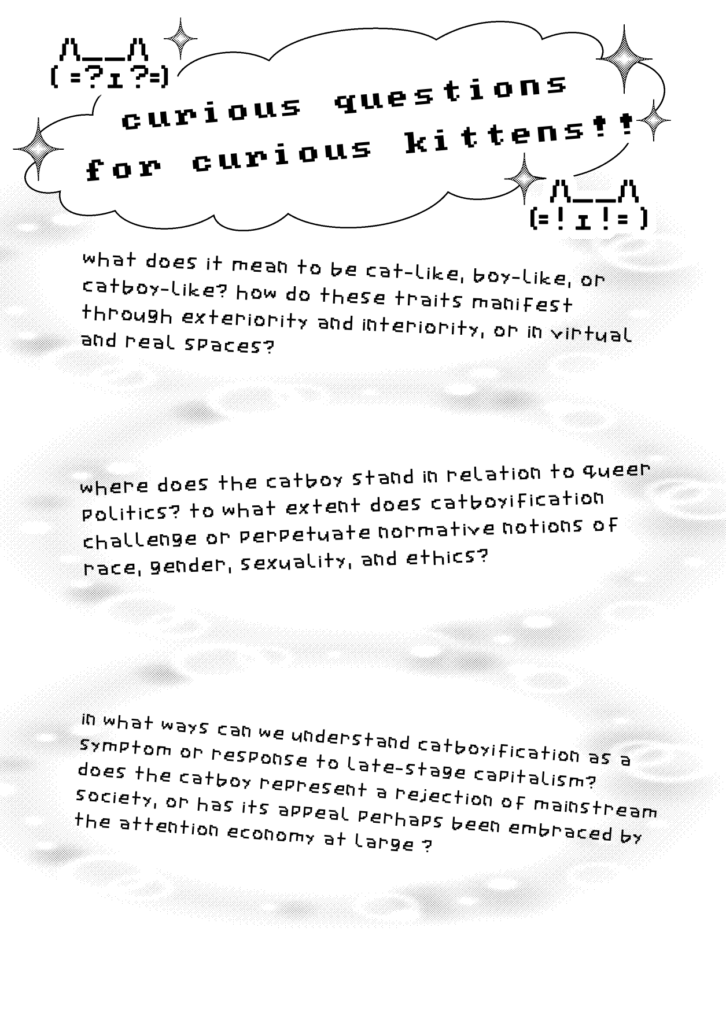
Since then, Chai said they have created an extensive portfolio of digital media art pieces. Some works include a virtual dinner during which the user must attempt to avoid questions, a zine about queer degeneracy and a game exploring the uses of trash in a post-apocalyptic wasteland. Although many of these art pieces could seem somewhat unrelated from one another at first, Chai said the fluidity and dynamic of diasporic cultural identity is a key theme of the latter piece.
Though Chai uses the Game Lab as a vehicle for his art practice, the lab also serves as a hub for their interdisciplinary research beyond the standard humanities or social science research, said fellow design media arts graduate student Vinny Roca. Whether that be through exploring advances in hardware used for artistic expression or traditional topical research, Chai is concerned with the production of artistic knowledge, Roca said.
“We have had some good conversations about what it means to take artistic research seriously as a kind of practice – where the hope is not only to create some aesthetic object but also to create some kind of useful information,” Roca said.
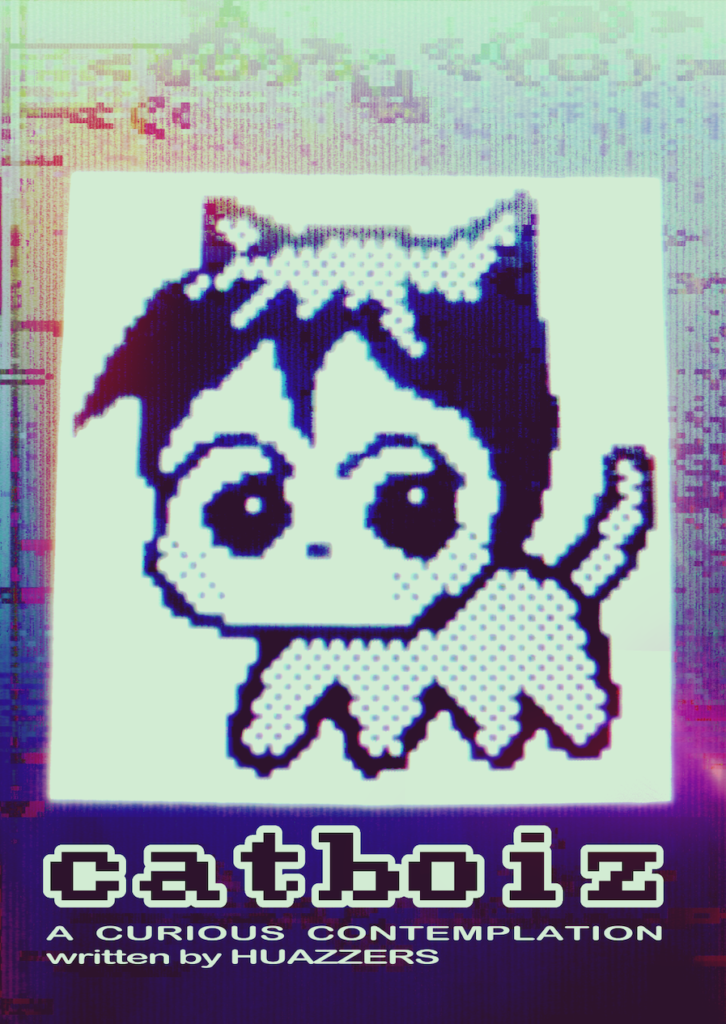
Many of Chai’s works feature interactive elements, such as freedom to change the user’s perspective or the ability to manipulate in-game objects. Rather than adhering to typical gaming conventions, Chai said they are more concerned with thinking about different ways of interfacing a player. Because of this non-adherence, Chai said he prefers to avoid calling his works games.
“People have a very specific idea of what things (in a game) should do,” Chai said. “Games should be fun. Games should engage in mechanics, which to some degree is a fair expectation of games. I feel like a lot of the way I make these projects aren’t built in that context.”
[Related: DESMA seniors display the culmination of their studies in ‘Sincerely,’ exhibition]
One of Chai’s most recent pieces is a zine about the internet-born phenomena of catboys and their implications. The project was a difficult yet rewarding one for Chai, said peer and friend Evan Ibarra, a fourth-year film student. Over the summer, Chai faced several technical challenges such as issues with motion capture and the Unity game engine, but in the end, his persistence was inspiring, Ibarra said. During the fall quarter, Chai’s catboy zine was displayed at an exhibition organized by the design media arts program, and the pair’s shared love for zines was fostered by their practice of trading them, Ibarra said.
Now, with graduation on the horizon, Chai said he is working on further developing the catboy gacha game, as well as exploring the realm of wearable technology for his thesis. More specifically, Chai said they plan on building a type of interactive wearable focusing on exploring virtual reality through the perspective of transgender projections and the consumption of voiceless media.
“I think a lot of my work is about that constant inability to capture an accurate picture of what my exact identity is at any given moment because it’s so nuanced, overlaid with so many layers,” Chai said.



